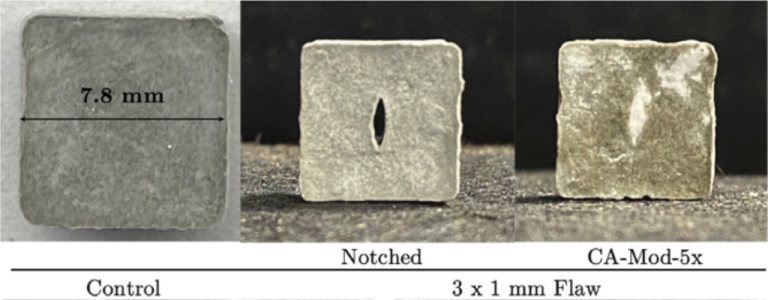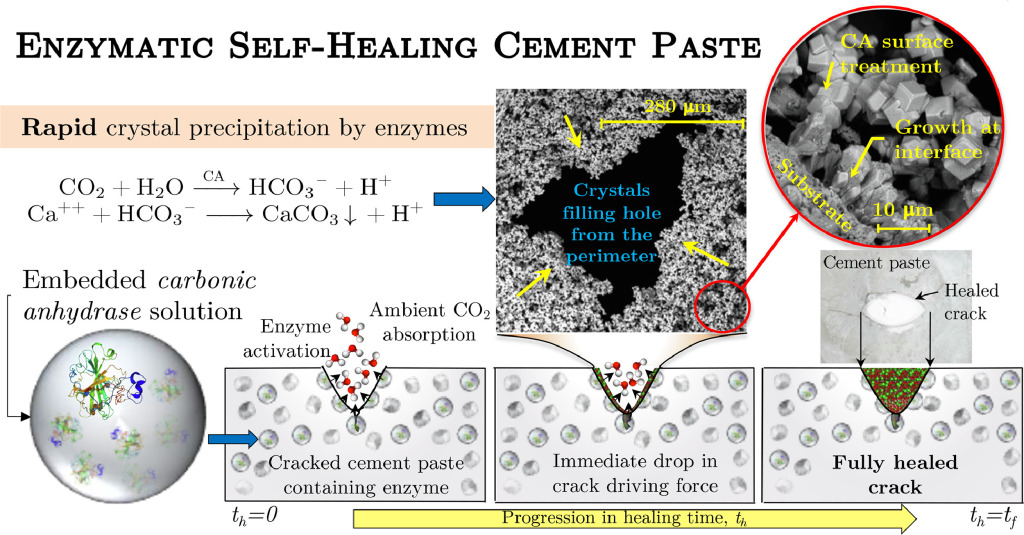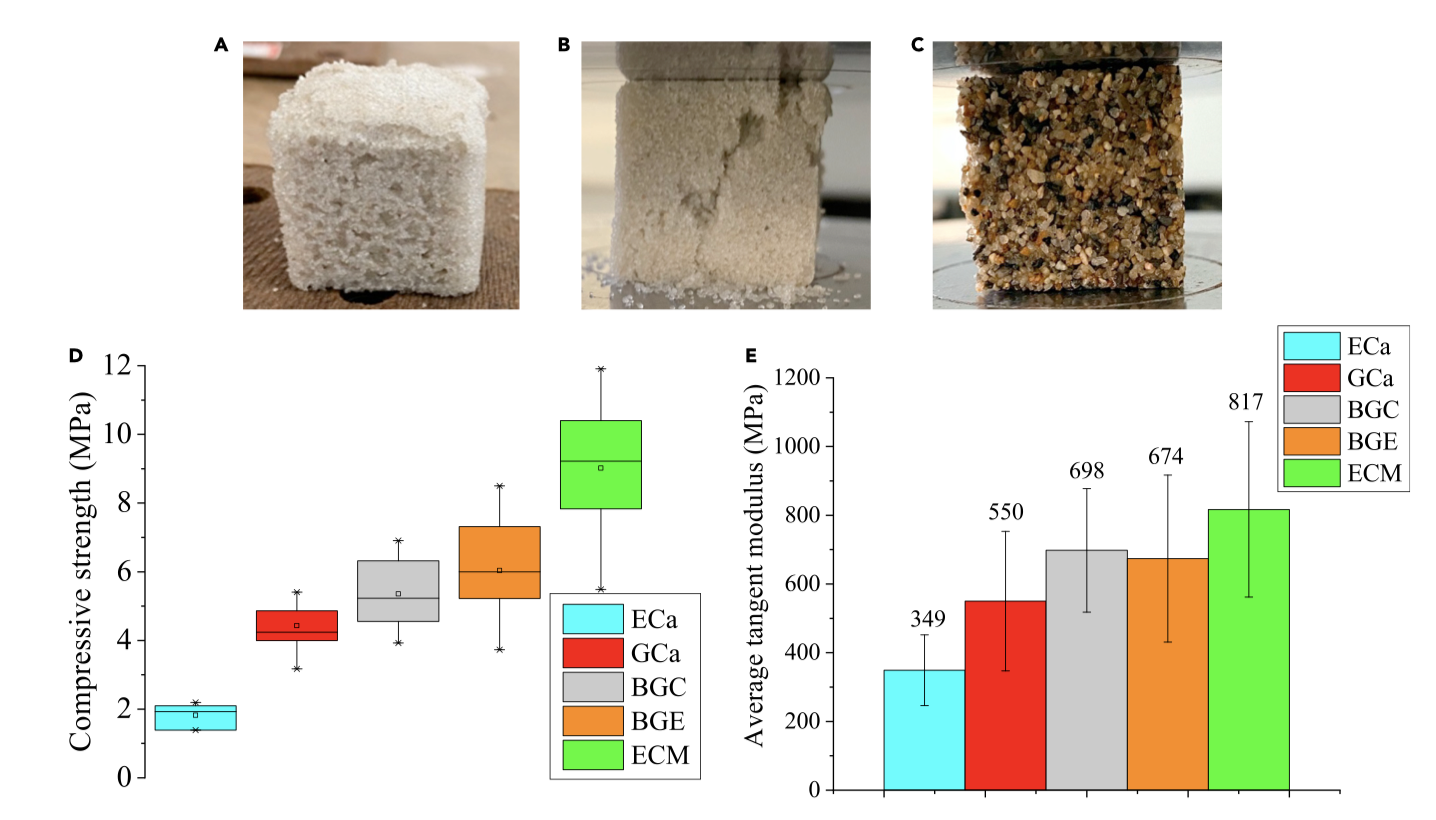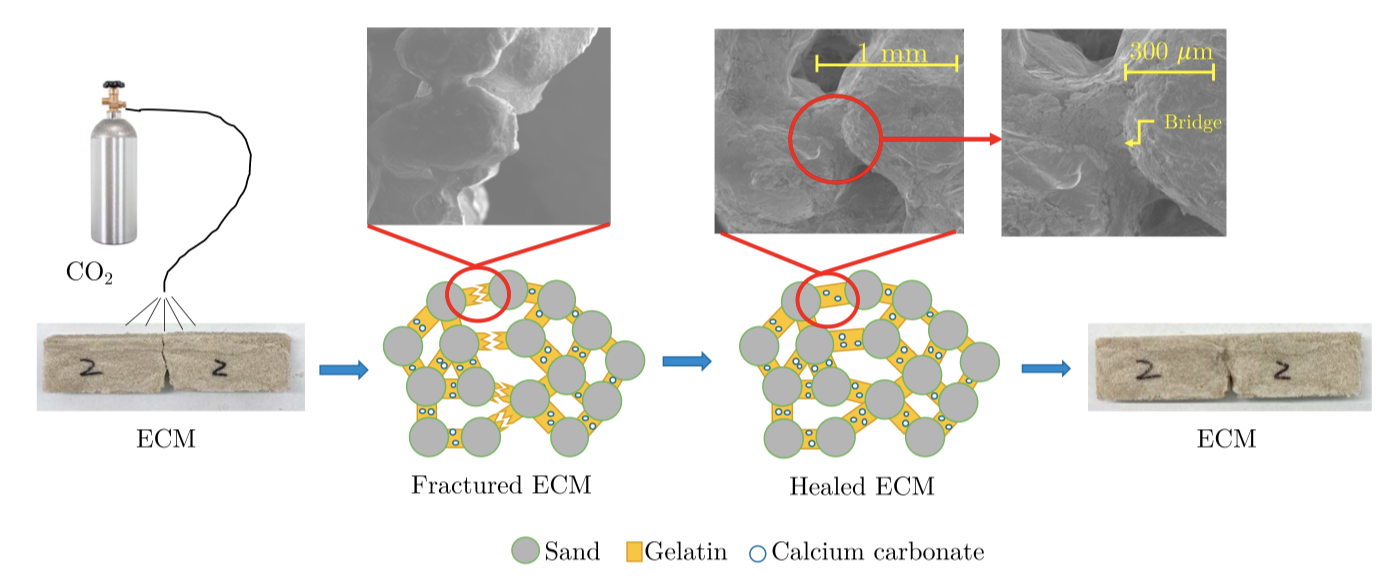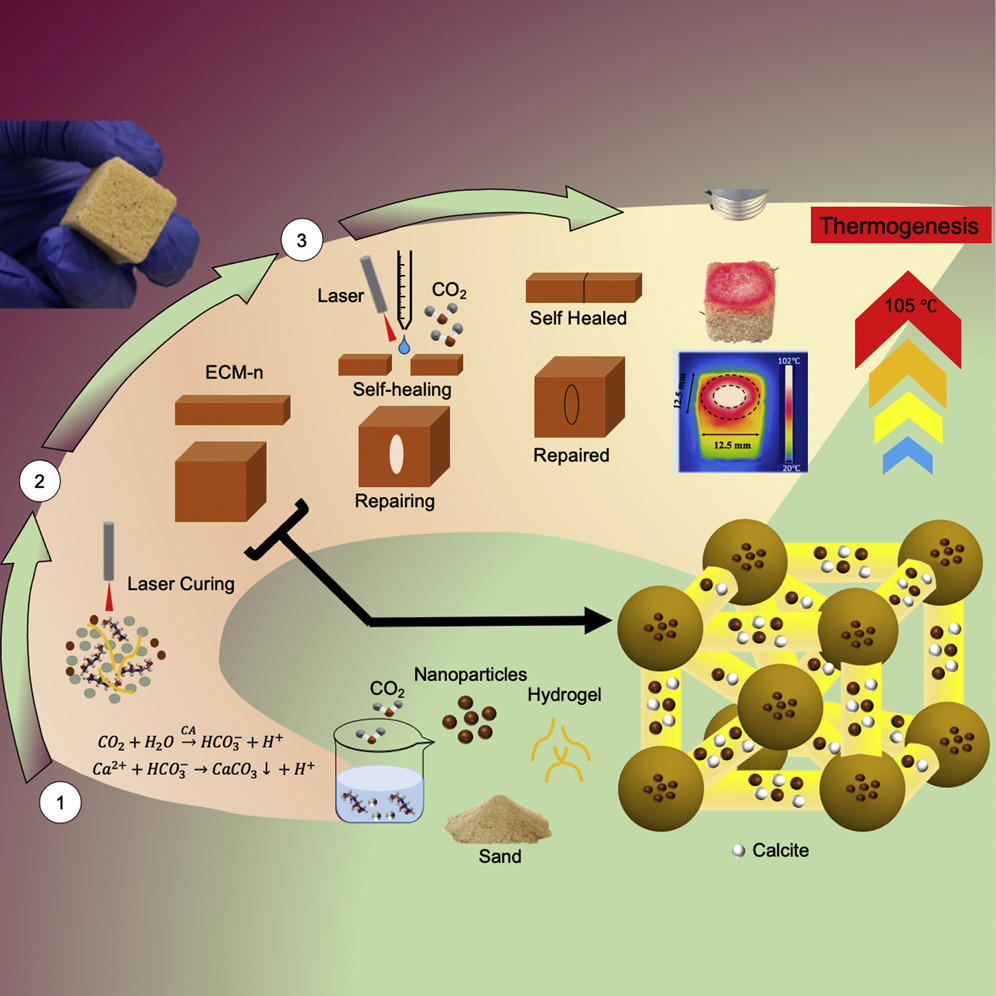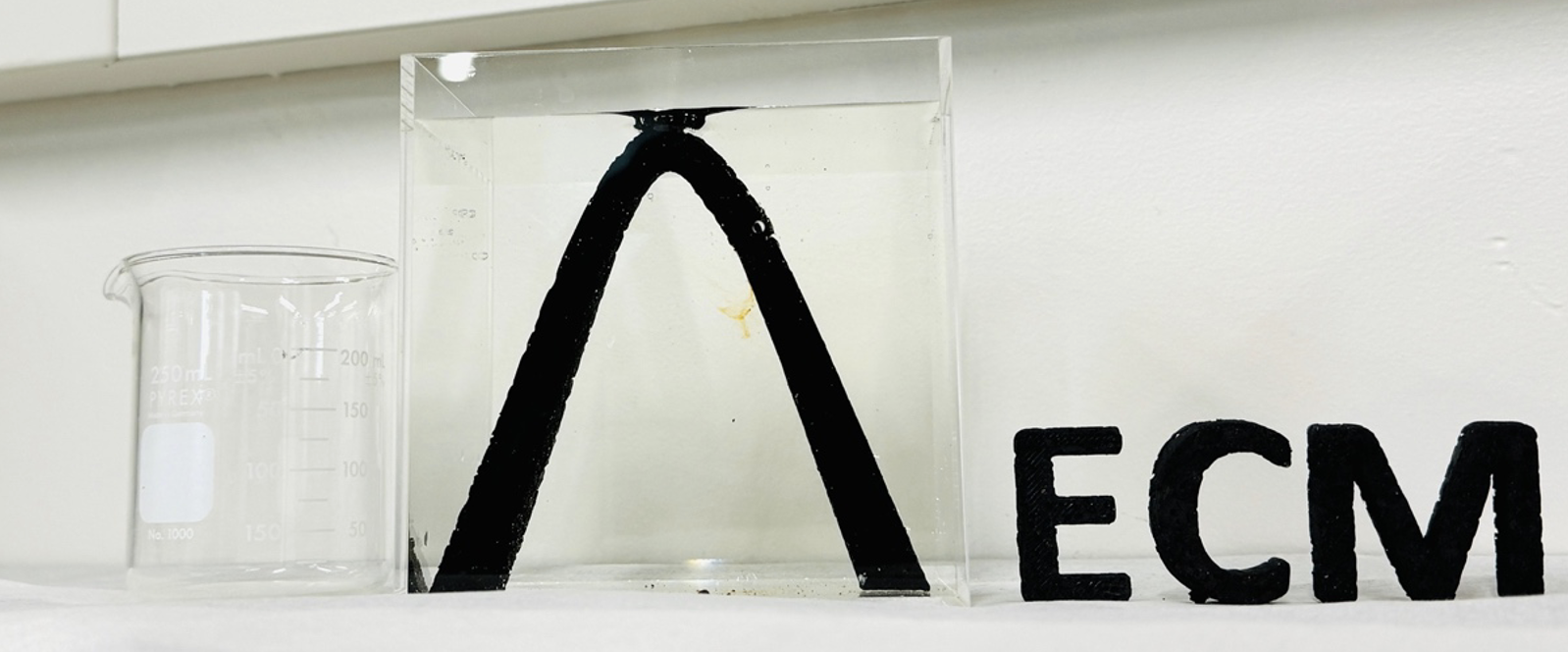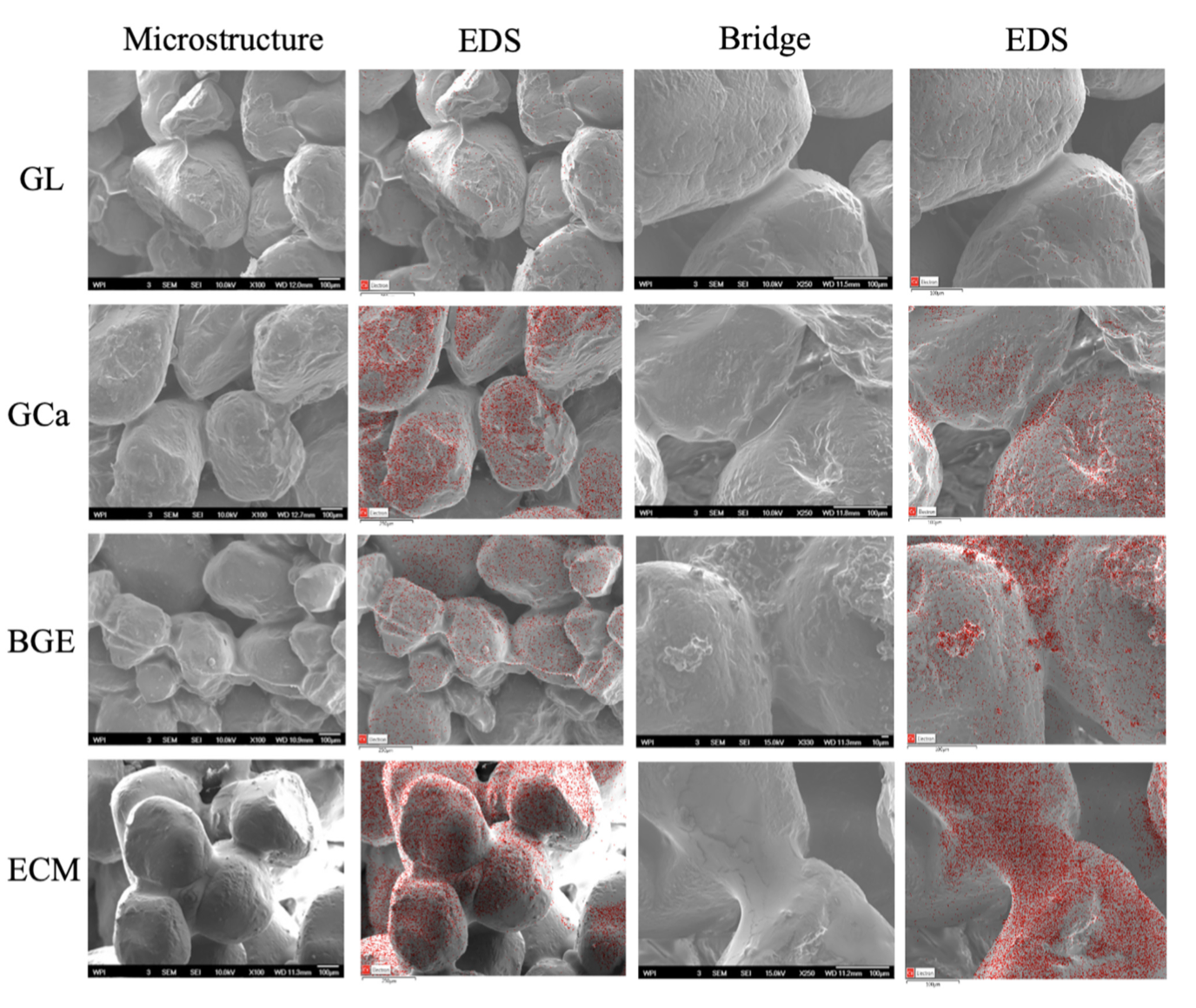Self-healing Concrete
Concrete is the most widely used material worldwide, responsible for 8% of global carbon emissions. It is inherently brittle and requires frequent repair or replacement, which is expensive and generates large volumes of CO2. Current repair methods using agents, such as mortar and epoxies, result in structures with reduced strength and resiliency owing to material mismatch. Therefore, self-healing cement paste (concrete’s main matrix) is required to overcome this problem.
The leading self-healing process is based on the use of bacteria and microbes, which are slow and have limited applications and unknown health effects. Inspired by the extremely efficient process of CO2 transfer in biological cells, this study introduces a method to develop a self-healing mechanism in a cementitious matrix using trace amounts of Carbonic Anhydrase (CA). CA catalyzes the reaction between Ca2+ ions and atmospheric CO2 to create calcium carbonate crystals with thermomechanical properties similar to those of cementitious matrices. The crystal growth rate using this method is orders of magnitude faster and more efficient than that of bacterial methods, resulting in the healing of large flaws on a timescale orders of magnitude shorter. This method can self-heal samples with millimeter-scale flaws within 24h and is significantly faster than all current methods that require a minimum of 28 days for the strength recovery of microscale cracks. This inexpensive method is biologically safe, consumes CO2, and avoids the use of unhealthy reagents. This could be an efficient mechanism for repairing and strengthening existing concrete structures.
Publications
- Shuai Wang, Suzanne Scarlata, Nima Rahbar “Curing and self-healing of enzymatic construction materials using nanoparticles,” Cell Reports Physical Sciences 2022, 3 (9), 101039.
- Shuai Wang, Suzanne Scarlat, Nima Rahbar “A Self-Healing Enzymatic Construction Material,” Matter, Volume 5, Issue 3, 957-974, 2022
- Jessica A Rosewitz, Shuai Wang, Suzanne F Scarlata, Nima Rahbar ”An enzymatic self-healing cementitious material,” Applied Materials Today, 2021, 23, 101035
- Nima Rahbar, “Extending the Life of Self-Healing Structural Materials,” Matter 2 (2), 289-291
Videos
Carbon Negative Material
Concrete, the most used material in the world, is one of the main contributors to global CO2 emissions, and efforts to find an alternative to concrete have yet to be fully successful. Inspired by the process of CO2 exchange in biological cells, we introduce a novel method to create a negative-emission enzymatic load-carrying construction material (ECM) with self-healing capabilities.
The concept proposed here uses carbonic anhydrase (CA) to catalyze the condensation of CO2 and water to promote the precipitation of calcium ions in aqueous solution as calcium carbonate crystals. The resulting ECM has a compressive strength and Young’s modulus that is more than twice that of the minimum acceptable values for cement mortar and other alternative building materials. The strengthening mechanism through the growth of mineral bridges that hold the sand particles in the ECM structure was also modeled and studied. This report provides a new path for the development of environmentally friendly construction materials at a low cost.
Publications
- Rebecca J. Gilchrist, Peter G. Oni, Nima Rahabr, Suzanne F. Scarlata, Ronald L. Grimm, “High pH and Temperature Tolerant Molecular Mimics of Carbonic Anhydrase Towards Long-Term Carbonate Production in Enzymatic Construction Material”, [Pre-Print] ChemRxiv July 22, 2024 DOI: 10.26434
- Nima Rahbar, Suzanne F Scarlata, Shuai Wang, “Enzymatic construction material” US Patent App. 17/943,548, 2023
- Shuai Wang, Nima Rahbar, Suzanne F Scariata, “Enzymatic construction material for repair and corrosion resistance and durability” US Patent App. 18/110,484, 2023
- Shuai Wang, Suzanne Scarlata, Nima Rahbar “Curing and self-healing of enzymatic construction materials using nanoparticles,” Cell Reports Physical Sciences 2022, 3 (9), 101039.
- Shuai Wang, Suzanne Scarlat, Nima Rahbar “A Self-Healing Enzymatic Construction Material,” Matter, Volume 5, Issue 3, 957-974, 2022

